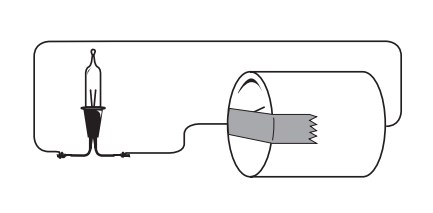Current electricity needs a completed circuit for electrons to flow continuously.
In this activity, students will make a broken circuit. They will then use the loose wire ends to test the conductivity of various materials.
When a conductor is placed between these loose wire ends, the circuit is completed and the light goes on. When an insulator is placed between the ends, the circuit is still broken, because electrons cannot flow through insulators, and the light stays off. Objects that are made of metal are all conductors to some degree.
The longer the path that the electric current must take through a conductor, the greater the resistance. Pencil 'lead' (graphite) conducts electric current but provides lots of resistance.
The effect of changing the length of the path the current takes through graphite can be seen by watching the brightness of the bulb.

